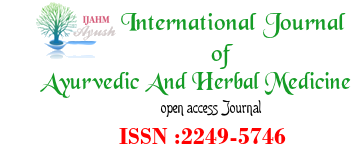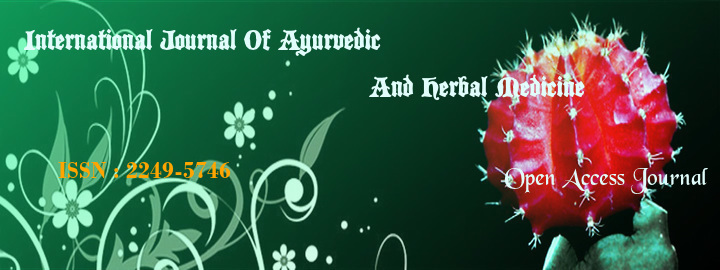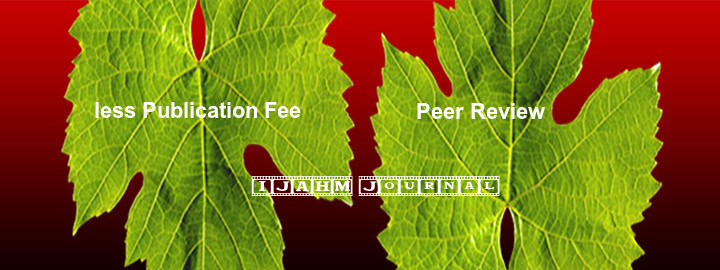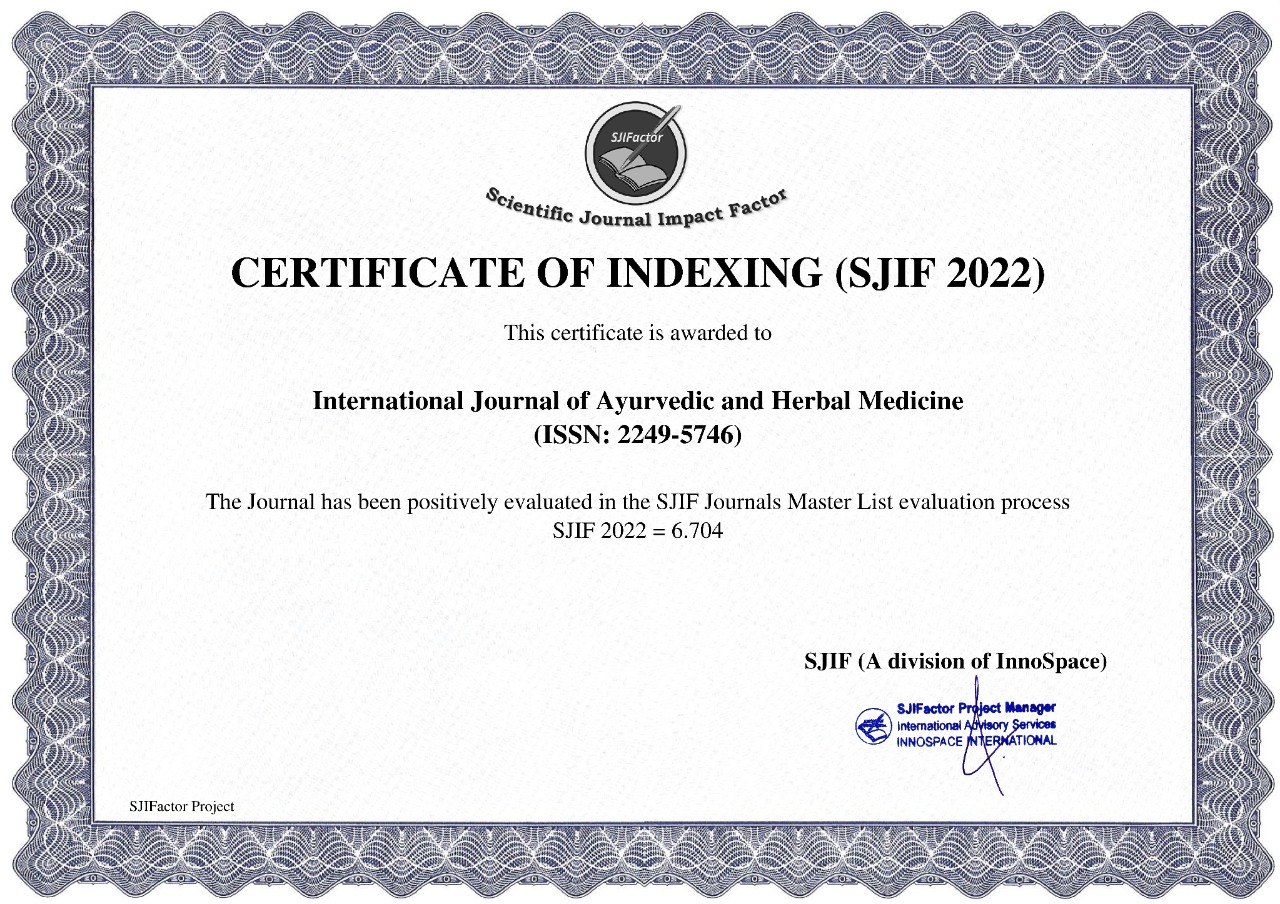


Volume & Issue : Volume 4 Issue 5
|
1T.Sasikala, *R.Prabakaran and 1S. Sathiyapriya 1Department of Botany, Government Arts College, (Autonomous) Salem -7, India. *Plant Tissue Culture Division, PG and Research Department of Botany, Government Arts College (Autonomous), Coimbatore-641018, India. *Corresponding author:
R.Prabakaran: Mail: This email address is being protected from spambots. You need JavaScript enabled to view it. |
Abstract
The Lamiaceae family contains several medicinal plants, widespread tendency in folk medicine. This study presents antibacterial activities evaluation of P. barbatus in different extracts obtained were tested for their antimicrobial activity against three bacterias namely B. cereus, E. coli and L. bacillus . The highest antimicrobial activity was exhibited by the aqueous and acetonic extracts in almost all the pathogenic bacterias using the well diffusion method. In the chloroform root extracts observed the maximum inhibition were (26.33±1.45) were at 80 µl on E.coli, in the aqueous root extract maximum inhibition (25.5±1.38) were observed on at 80 µl on E. coli. In acetone root extracts (22.83±1.19) were at 80 µl on B. cereus, petroleum ether root shows the maximum inhibition (22.0±1.06) at 80 µl on L. bacillus. The aqueous extracts were much active against all the bacteria tested. The antibacterial activity shows that the zone of inhibition is increasing with the increasing concentrations in all the extracts.
Key word
Antimicrobial, Antifeedant, Diterpene and Plectranthus.
REFERANCES
1. Abdel-Mogib M, Albar HA, Batterjee SM. Chemistry of the Genus Plectranthus. Molecules, (2002); 7:271-301.
2. Albuquerque RL, Kentopff MR, Machado MIL, Silva MG, Matos FJA, Morais SM, Braz-Filho R. Diterpenos tipo abietano isolados de Plectranthus barbatus Andrews. Química Nova, (2007); 30:1882-1886.
3. Anonymous “Coleus forskohlii. In: wealth of India-Raw material, Vol II. Central scientific And Industrial Research, New Delhi, 308. 1950.
4. Arpana J, Symbiotic Response of Patchouli (Pogostemon cablin ( Blanco ) Benth. to different Arbuscular mycorrhizal Fungi. Advances in Environmental Biology, 2, pp.20–24. 2008.
5. Cowan M, Plant products as antimicrobial agents. Clinical Microbial Rev, (1999); 12(4): 546-582.
6. El Masri H, Himmel M, Wlodarska M, Wormsbecker A. The effect of Plectranthus barbatus derived forskolin on cyclic 3’ 5’ adenosine monophosphate levels measured as β-galactosidade activity and on glucose transport in Escherichia coli B23. JEMI. (2007); 11:30-34.
7. Figueiredo NL, Aguiar SRMM, Falé PL, Ascensão L, Serralheiro MLM, Lino ARL. The inhibitory effect of Plectranthus barbatus and Plectranthus ecklonii leaves on the viability, glucosyl transferase activity and biofilm formation of Streptococcus sobrinus and Streptococcus mutans. Food Chem (2010); 119:664-668.
8. Gibbons S. Review: Phytochemicals for bacterial resistance - Strengths, weaknesses and opportunities. Planta Med, (2008); 74:594-602.
9. Kiritkar KR, Basu BD. Indian medicinal plants. Vol.3. Dehra Dun: Singh B and Singh MP. Publisher, pp. 20-32. 1991.
10. Kubo I, Matsumoto T, Tori M, Asakawa Y, Chem. Lett., 1513. (1984).
11. Neusa L, Figueiredo Pedro Luis Fale Paulo J, Amorim Madeira M, Helena Florencio, Lia Ascensao, Maria Luisa M, Serralheiro, and Ana Rosa L. Lino. Phytochemical Analysis of Plectranthus sp. Extracts and Application in Inhibition of Dental Bacteria, Streptococcus sobrinus and Streptococcus mutans, European Journal of Medicinal Plants, (2014); 4(7): 794-809.
12. Patrícia Rijo1, Marina Batista, Marisa Matos, Helga Rocha, Sandra Jesus, M. Fatima Simoes Screening of antioxidant and antimicrobial activities on Plectranthus spp. Extracts Biomed Biopharm Res , (2012); (9) 2: 225-235.
13. Simoes MF, Rijo P, Duarte A, Barbosa D, Matias D, Delgado J, Cirilo N, Rodriguez B. Two new diterpenoids from Plectranthus species. Phytochem. Lett (2010); 3:221-225.
14. Stavri M, Paton A, Skelton BW, Gibbons S. Antibacterial diterpenes from Plectranthus ernstii. J. Nat. Prod, (2009); 72:1191-1194.
15. Tekwu EM, Pieme AC, Beng VP. Investigations of antimicrobial activity of some Cameroonian medicinal plant extracts against bacteria and yeast with gastrointestinal relevance. J. Ethnopharmacol, (2012); 142:265–273.
16. Vimalraj TR, Kumar SS, Vadivel S, Ramesh S, Thejomoorthy P, Antibacterial effect of Cassia fistula extract on pathogenic bacteria of veterinary importance. Tamilnadu J Veterinary & Animal Sciences, (2009); 5(3): 109-113.
index























